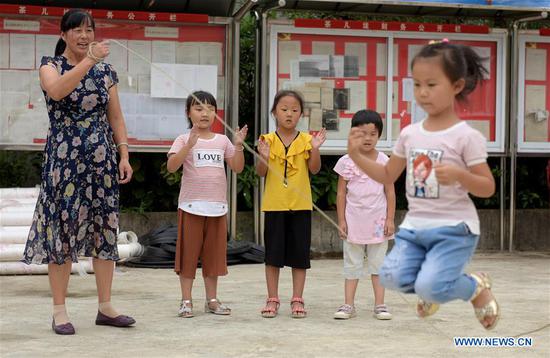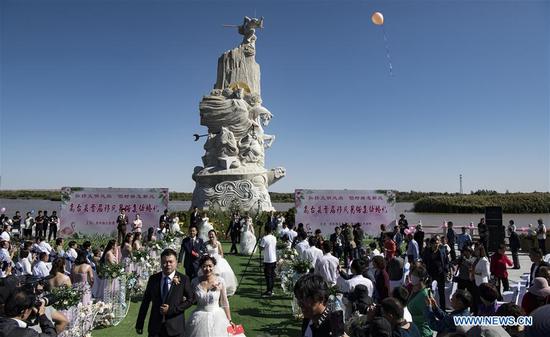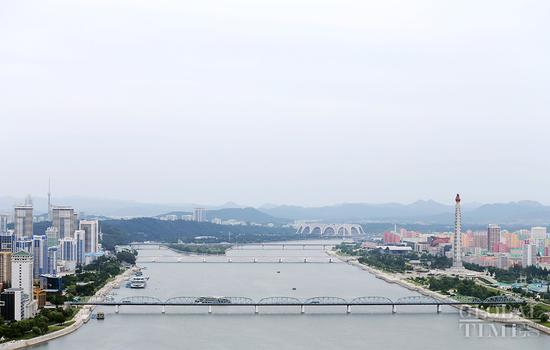
Map of China
China's reform and opening-up policy has brought enormous changes to every aspect of the country. Aside from data on the rapid economic growth in the past four decades, statistics from other fields, especially religion and population, also reflect changes in the Chinese society.
Increasing number of mosques in Xinjiang
Northwest China's Xinjiang Uyghur Autonomous Region has 24,400 mosques in 2018 while the number in 1984 was 9,000. Across China, there are 144,000 religious venues registered to local religious affair administrations, including 35,000 mosques.
Source: the State Council Information Office, the Youth Daily
Longer life in Tibet
The average life span in Southwest China's Tibet Autonomous Region was 36 years in the 1950s and it was expected to reach 70 at the end of the 13th Five-Year Plan (2016-20).
Source: The family planning commission in Tibet
Poverty alleviation work in Guizhou
In 1978, China had over 770 million underprivileged people, with over half of its population living under the poverty threshold. In the last 40 years, China has pulled more than 740 million people out of poverty. About 19 million people shook off poverty every year in China. In 2017, China had only 30 million people in poverty.
Southwest China's Guizhou Province was known as the poorest province in China with a GDP per capita of only 175 yuan in 1978. The number has increased to 33,200 yuan ($4,860) in 2016.
Source: National Bureau of Statistics
Poverty alleviation work in Guizhou
In 1978, China had over 770 million underprivileged people, with over half of its population living under the poverty threshold. In the last 40 years, China has pulled more than 740 million people out of poverty. About 19 million people shook off poverty every year in China. In 2017, China had only 30 million people in poverty.
Southwest China's Guizhou Province was known as the poorest province in China with a GDP per capita of only 175 yuan in 1978. The number has increased to 33,200 yuan ($4,860) in 2016.
Source: National Bureau of Statistics
Number of tourists from the Chinese mainland to Hong Kong and Macao
In the early years of China's reform and opening-up, as a trial policy, residents of Guangdong Province were allowed to go to Hong Kong to visit families and relatives. In 1984, the Chinese State Council approved people from the mainland to go to Hong Kong and Macao to visit family. After the return of Hong Kong and Macao in the late 1990s, Hong Kong and Macao saw 2.36 million tourists from the mainland in 1997. Twenty years later, the number has swelled by almost 20 times.
Source: Hong Kong Tourism Board
Radio and television industry in Hunan
Established in 2000, Golden Eagle Broadcasting System (GBS) is a media giant based in Central China's Hunan Province. Hunan TV, a representative channel under GBS, underwent an overall brand promotion campaign in 2006 and saw a revenue of 3 billion yuan in the same year. In 2017, GBS took in 18.3 billion yuan in revenue.
Source: Hunan Daily
E-commerce in Zhejiang
In 1999, Alibaba established its e-commerce platform in Hangzhou, capital of East China's Zhejiang Province, setting in motion China's booming e-commerce business. The next year, a total of 277 million yuan in transactions was made in China's e-commerce sector. A decade later, China saw 4 trillion yuan worth of e-commerce transactions. In 2017, the number reached 29.16 trillion yuan.
Source: National Bureau of Statistics
Divorce rate in Beijing
Almost half as many people got divorced as got married in Beijing in 2017. Some 10.63 million couples married and more than 4.37 million couples got divorced in the capital last year. In 1990, more than 9.5 million couples married while 800,000 divorced.
Source: Ministry of Civil Affairs
Birth rate in Shandong
East China's Shandong Province had the nation's highest birth rate in 2017, at 17.9 births per thousand people. The data was far below the birth rate of 33.9 per thousand people in 1971 just as China's one-child policy was announced, and only slightly more than the birth rate of 16.9 per thousand people in 1979 after the policy had time to take effect. In 2017, 1.74 million babies were born in Shandong. Of that number, some 1.16 million were the second child of their family, accounting for 13 percent of the number of the second children born in China in that year.
Source: Shandong family planning commission


















































